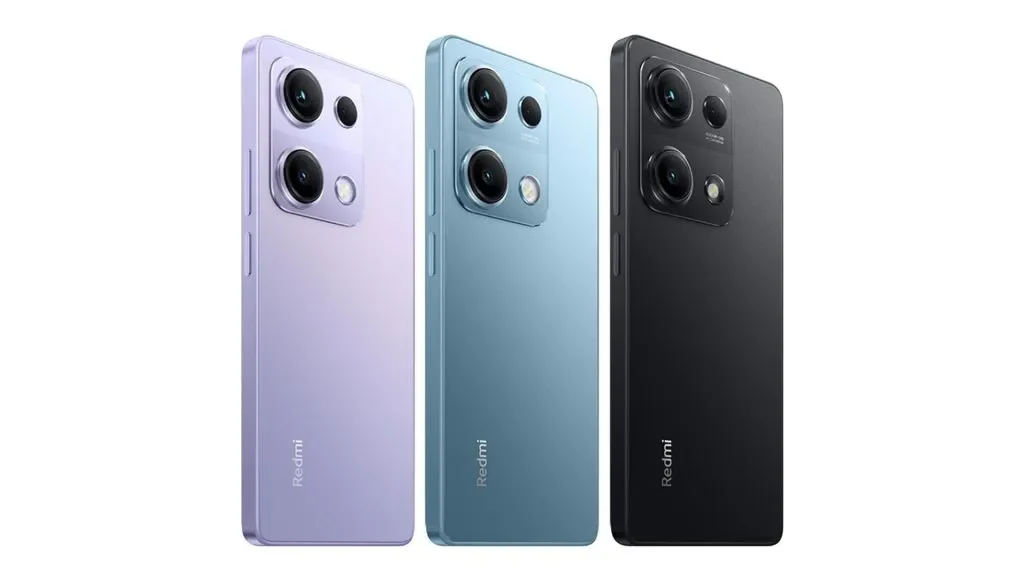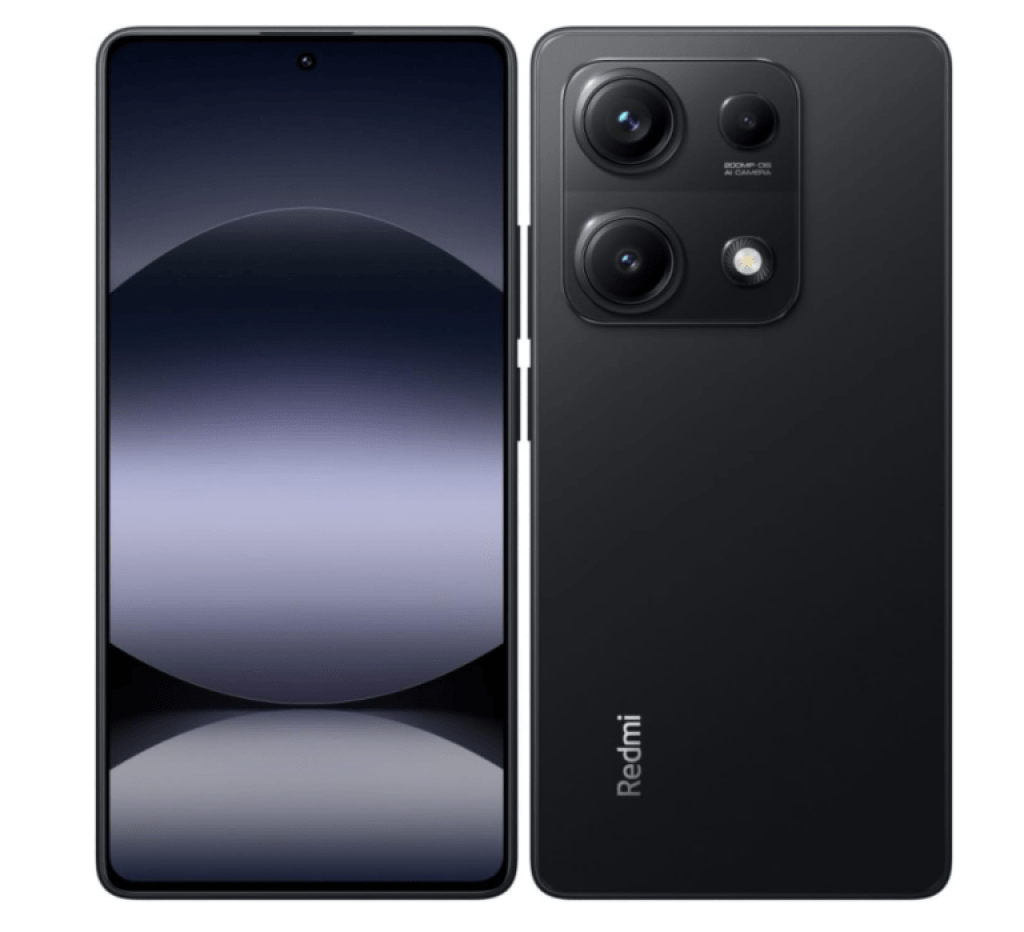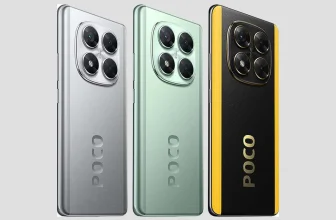
When a new phone comes out, especially from Xiaomi, which is a master of complicated and sometimes confusing naming, it makes you curious. The Redmi Note 14s is no exception. But to be honest, since the news of this phone first leaked, there were whispers that this phone is not so new and looks more like a redesigned version of our Redmi Note 13 Pro 4G. Such things are not strange in the mobile market and companies sometimes make such changes for different markets or to refresh a model. But our task at wiseselecting is to pull the hair out of our hair and see if this “s” at the end of the name Redmi Note 14s really indicates something special and improved or is it just a prefix to make the market more crowded! In this review, we want to see if the Redmi Note 14s can be an attractive option to buy, given its specifications and price (around 240 to 260 euros in global markets).
Xiaomi Redmi Note 14S Design Review
The first thing we see from a phone is its appearance! In terms of design, the Redmi Note 14s looks very similar to its older brother, the Redmi Note 13 Pro 4G. The same almost flat and cubic design with relatively sharp edges that somehow reminds one of the new iPhones. Of course, the camera island has changed a little compared to the version made from the method, but the overall story is the same. The body and frame of the phone are made of plastic and the front panel is protected by Gorilla Glass 5. The use of plastic is quite normal in this price range and we should not expect a metal body or glass (for the back). The important thing is that this plastic feels good and does not look chipped. Fortunately, Xiaomi seems to have done a good job in this area and, although it is plastic, it looks attractive and does not give the impression of being cheap. The color options include black, purple and blue, which are nice choices.
In terms of dimensions and weight, we are dealing with a phone that weighs 179 grams and is 8 mm thick. This means that the phone is neither too heavy nor too light, and it fits easily in the hand and feels good. One of the positive points in the design of this phone is the IP64 certification. This means that the Redmi Note 14s is resistant to splashes of water and dust. This is a small improvement over the IP54 of the Redmi Note 13 Pro 4G and makes it easier to use in different environments, although you should not expect complete water resistance.
The power and volume buttons, Type-C port, 3.5 mm headphone jack, stereo speakers and even the infrared transmitter (IR Blaster) are all in their places. These features, especially the headphone jack and infrared transmitter, are still important to many users and their presence is an advantage.
Overall, the design of the Redmi Note 14s may not be very innovative and new and is a repetition of the successful design of the previous generation, but it is still stylish and user-friendly. The question is whether this repetitive design can still have a say in 2025 and in competition with newer phones. It seems that Xiaomi is more focused on maintaining the price and perhaps minor improvements than a revolution in design.
Of course, here is a very concise 3×3 table summarizing the provided text:
| Design & Appearance | Build & Materials | Key Features |
|---|---|---|
| Similar to Redmi Note 13 Pro; sharp edges | Plastic frame and body | IP64 rating (splash/dust resistant) |
| Cubic shape, resembles newer iPhones | Gorilla Glass 5 front | 3.5mm jack & IR Blaster included |
| Non-innovative but stylish & user-friendly | Good quality, attractive plastic | 179g weight, 8mm thickness |
Xiaomi Redmi Note 14S Display Review
Let’s move on to one of the areas where Xiaomi phones usually do well, namely the display. The Redmi Note 14s has a 6.67-inch AMOLED display with a Full HD + resolution (1080×2400 pixels) and a 120 Hz refresh rate. These specifications are very good on paper! It also has the ability to display 1 billion colors, which means we can expect vivid colors and high contrast. The image quality is excellent and has excellent sharpness. The display of the Redmi Note 13 Pro 4G, which had similar specifications, was also recognized as a major strength.
The brightness of the display is also acceptable. Its average brightness is 500 nits, in HBM (High Brightness Mode) mode it reaches 1000 nits and the maximum brightness is 1300 nits. This means that even under direct sunlight you should not have any particular problem seeing the content on the screen.
The 120 Hz refresh rate is also present and makes everything, from navigating menus to playing games, very smooth and enjoyable. Fortunately, this refresh rate is also adaptive and changes between 60 and 120 Hz to both maintain the smoothness of the image and optimize battery consumption. Although the high refresh rate does increase battery consumption anyway.
Gorilla Glass 5 is also used to protect this beautiful display. Other features such as always-on display, support for the DCI-P3 color space, reading mode and the ability to reduce blue light to protect the eyes are also found on this display.
Overall, the display seems to be one of the main strengths of the Redmi Note 14s. In the mid-range smartphone market, where many companies are cutting back on display quality to cut costs, having an AMOLED panel with these specifications could be a trump card for Xiaomi and provide a very good visual experience for users, especially if you are a fan of watching movies and browsing the web. Good color accuracy along with high brightness and fluidity, provides a complete package for enjoying content.

Xiaomi Redmi Note 14s Battery Performance
The Redmi Note 14s has a 5,000 mAh battery, which is a standard and good capacity for a modern phone. But the question is, how long does this battery last in practice?
Initial reviews show that this phone can last you a full day with mixed and normal use, and if your use is lighter, it can hold a charge for up to two days. Of course, if you’re a heavy gamer like me, you’ll probably have to look for a charger late at night. The Redmi Note 13 Pro 4G also lasted about 11 to 12 hours on a similar battery, which wasn’t great, but it was satisfactory.
But where the Redmi Note 14s really shines is in its charging speed. The phone supports 67W fast charging, and Xiaomi claims that it can charge 50% in 16 minutes and 100% in 46 minutes. This speed is really great and is one of the biggest advantages of this phone. You don’t have to wait long for the phone to charge. The 67W charger comes with the phone, which is also a positive point and you don’t have to spend extra money to buy a charger.
Overall, in the battery department, the Redmi Note 14s can meet the needs of most users with its decent capacity and excellent charging speed. If a day’s charge is enough for you, the high charging speed can be very useful and will get your phone ready for the rest of the day in a short time.
Xiaomi Redmi Note 14s Camera Performance
Now we come to the interesting part of the camera! Where Xiaomi has tried to attract attention with a big 200-megapixel number for the main camera of the Redmi Note 14s. But is this 200-megapixel just a publicity stunt or does it really change the quality of the photos?
The main camera of this phone has a 200-megapixel sensor with an aperture of f/1.7, optical image stabilization (OIS), a relatively large 1/1.4-inch sensor and multi-axis autofocus with phase detection. These specifications are very promising on paper. Initial reviews for the Redmi Note 14s and experiences with the Redmi Note 13 Pro 4G, which has a similar camera, show that it captures high-quality photos in daylight with fine details, good sharpness and natural colors. The optical stabilization also helps to reduce blur in photos and videos. As for the 200MP mode, it seems that using the full resolution significantly improves the quality of the images and is not just for advertising purposes. Of course, it should be borne in mind that the Helio G99 Ultra processor may face challenges in processing this amount of information, and this can affect the speed of photography or the final quality. It can be said that the 200MP camera with this processor is more like a publicity stunt.
But let’s move on to other lenses. We also have an 8MP ultrawide lens with a 120-degree viewing angle. These lenses usually perform mediocre in mid-range phones, and the Redmi Note 14s is no exception. It is expected to take acceptable photos in daylight, but its quality drops in low light and you should not expect much from it. There is also a 2MP macro lens that is more used to increase the number of cameras and for entertainment purposes and is not very high quality. So if you are looking for professional photography with ultrawide and macro lenses, this phone may not be the best option. The selfie camera is also 16 megapixels. In good light, it takes sharp photos with good colors, but in portrait mode, it can sometimes have trouble recognizing the edges of the subject.
In the video section, unfortunately, the Redmi Note 14s can only shoot videos in 1080p quality at 30 or 60 frames per second, both with the main camera and the selfie camera. This means there is no 4K video recording, which is a big drawback for a phone with a 200 megapixel camera in 2025. The quality of 1080p videos is decent, the colors are natural, and the stabilization helps stabilize the image to some extent. The camera software also offers various modes such as Night Mode, Panorama, and Portrait.
Overall, the 200 megapixel main camera of the Redmi Note 14s performs well for the price, especially in daylight, but it doesn’t do much. But its secondary lens and limited video capabilities make the camera package a bit unbalanced.
Of course. Here is a very concise 3×3 table summarizing the camera section:
| Camera Specs | Performance & Quality | Verdict & Limitations |
|---|---|---|
| Main: 200MP, OIS, f/1.7 | Excellent daylight photos, natural colors | Powerful main sensor, but a bit gimmicky with this processor |
| Ultrawide: 8MP | Mediocre, acceptable only in good light | Weak secondary cameras (ultrawide & macro) |
| Selfie: 16MP | Good in daylight, struggles with portrait edges | No 4K video; max 1080p is a major drawback |
Hardware and software performance of the Redmi Note 14s
Now, let’s get to the beating heart of the phone, the hardware. The Redmi Note 14s uses the MediaTek Helio G99 Ultra chip, which is built with 6nm technology and is accompanied by the Mali-G57 MC2 GPU. This chip performs smoothly and without lags for everyday tasks like browsing the web, scrolling through social networks, and running multiple apps simultaneously. But when it comes to heavy games, the story is a little different.
The Helio G99 Ultra is a mid-range 4G chip and you shouldn’t expect miracles from it in running graphic-intensive games like Call of Duty Mobile or PUBG at the highest settings. It’s good for light and medium-heavy games, but in heavy games you have to lower the graphics settings to get an acceptable frame rate. So if you’re a serious gamer, this might not be the best choice for you. This chip is going to be outdated by 2025, and newer competitors with more powerful chips will be on the market.
The Redmi Note 14s comes with 8GB of RAM and 256GB of UFS 2.2 storage. This amount of RAM is enough for most users and smooth multitasking. The UFS 2.2 storage is also decent, but it’s slower than the UFS 3.1 or newer that we see in some other mid-range phones, and this can affect the speed of loading apps or transferring files. Fortunately, there’s also the option to expand the storage with a microSDXC card, although the slot is shared with the second SIM card.
In terms of software, the Redmi Note 14s comes with Android 15 and Xiaomi’s new user interface, HyperOS 2.0. HyperOS is also supposed to offer a faster, more stable, and more optimized experience than MIUI, with smoother animations and lower resource consumption. Xiaomi usually provides good software updates for the Redmi Note series, and it is said that this phone will also receive at least 2 major OS updates and 4 years of security updates.
Overall, the Redmi Note 14s hardware is quite suitable for everyday tasks and light gaming, but for professional gamers or those looking for the highest level of performance, it may be a bit disappointing. The UI performance can also be attractive with its decent customization options and AI capabilities thanks to the Gemini app.
| Design & Build | ✨ Key Features | 📐 Dimensions |
|---|---|---|
| Sleek, cubic design with sharp edges | 🛡️ IP64 Splash & Dust Resistance | 179g Weight, 8mm Thickness |
| Plastic body that feels premium | 🎧 3.5mm Jack & IR Blaster | Comfortable grip |
| Colors: Black, Purple, Blue | 🔊 Stereo Speakers |
| Main: 200MP with OIS | Excellent daylight photos | ❌ No 4K video recording |
| Ultrawide: 8MP | Good detail & natural colors | Weak low-light ultrawide |
| Selfie: 16MP | Decent 1080p video | Mediocre macro lens |
| 💻 Hardware & OS | ⚡ Performance | 🔄 Software Support |
|---|---|---|
| MediaTek Helio G99 Ultra | Smooth daily performance | Android 15 + HyperOS 2.0 |
| 8GB RAM + 256GB Storage | Handles light gaming well | 2 OS + 4 Security updates |
| UFS 2.2 + microSD slot | Struggles with heavy games | Fast, optimized interface |
Xiaomi Redmi Note 14s Speaker Performance
In the audio department, the Redmi Note 14s comes with stereo speakers, which is a positive point in itself. Having stereo speakers, especially when watching movies or playing games, provides a much better experience than mono speakers. The sound quality of these speakers is also acceptable. The volume is good and can be heard easily even in relatively crowded environments. The clarity and separation of the sound are also good for a mid-range phone, and it has acceptable bass.
And the good news for fans of wired headphones, the Redmi Note 14s has also retained the 3.5mm headphone jack! This means that you can use your old headphones without the need for a dongle or Bluetooth headphones. Overall, considering the high-quality AMOLED display, having decent stereo speakers, and a headphone jack, the Redmi Note 14s can be a good option for those who watch movies or listen to music a lot on their phones.
Should we buy the Xiaomi Redmi Note 14s or not?
So, we have reached the end of the Redmi Note 14s review. It is time to have a general summary and see if the Redmi Note 14s, which is now worth buying with these specifications, is it better to check out other options in the market.
The Redmi Note 14s is a mid-range phone that has tried to win the hearts of users with several attractive features such as an excellent 120 Hz AMOLED display, a 67-watt super-fast charger, and a 200-megapixel main camera (at least on paper and in daylight). Although the design of the phone is not very new and the same chassis as the previous generation, it is still stylish and handsome and has become a little more resistant with IP64 certification. The presence of a 3.5 mm headphone jack, infrared transmitter, and stereo speakers are other positive points. This package is released with Android 15 and HyperOS, which can also have a smooth software experience.
But on the other hand, it also has its weaknesses that cannot be ignored. The biggest problem is perhaps the Helio G99 Ultra chip, which seems a bit weak for a phone in 2025, especially if you are a heavy gamer. The main competitors of this phone in the market (based on the global price of 240-260 euros and current market prices) could be the Samsung A35 and Xiaomi’s own Poco X7, both of which have better hardware, a more modern design, and more modern connectivity features, and if this phone were to be released to the market at a lower price than these phones, it could be said to be worth buying.



